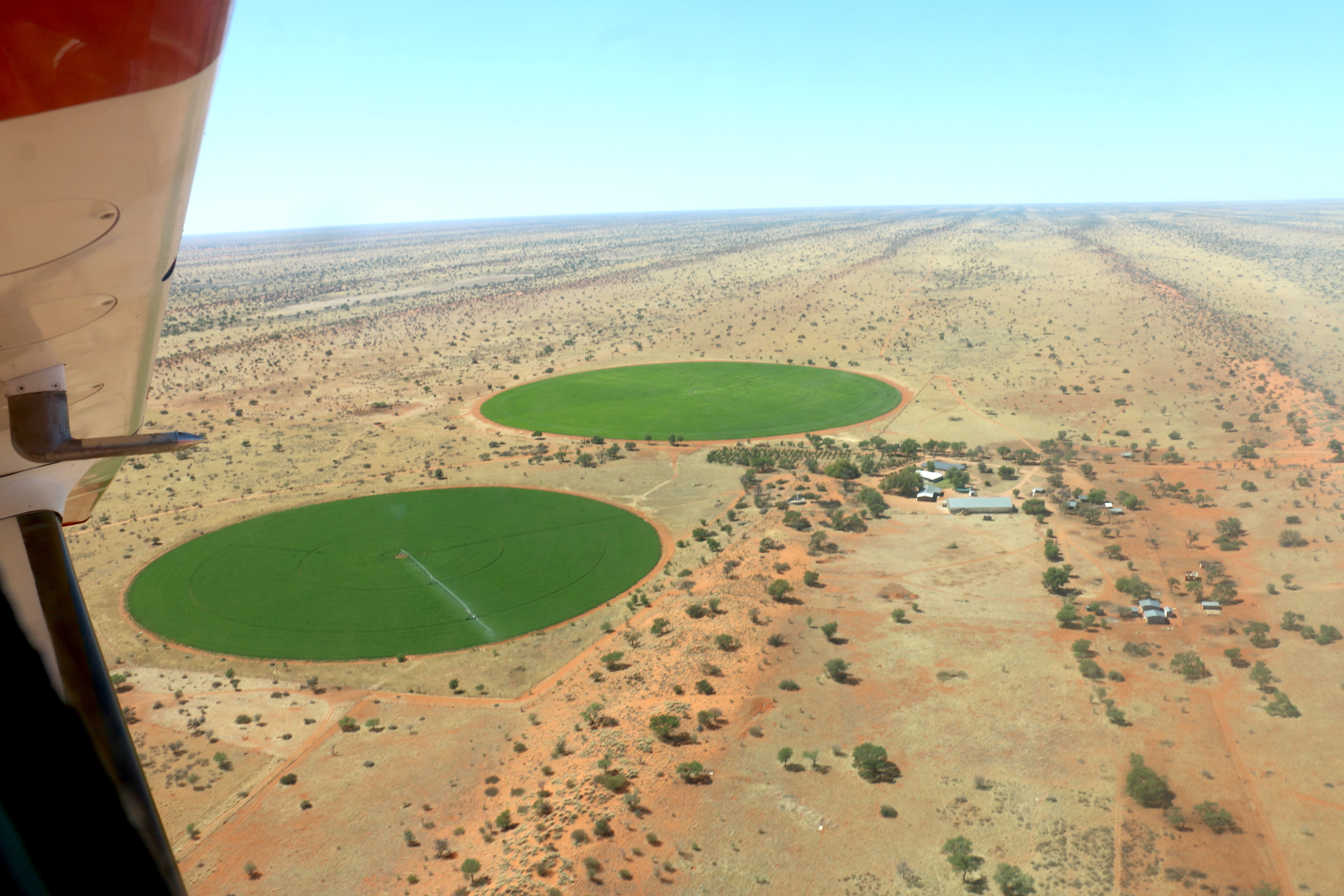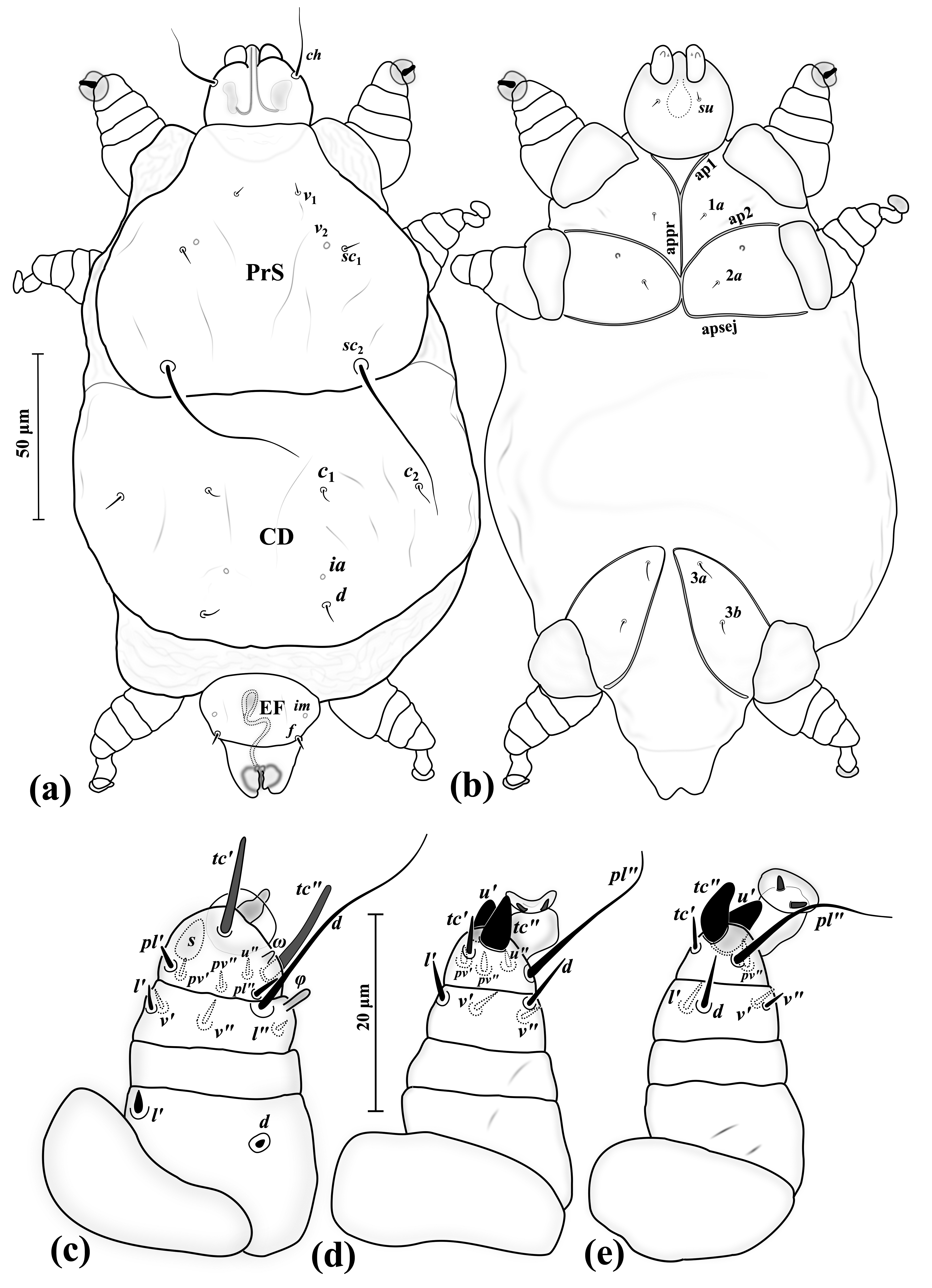|
Balaustium Medicagoense
''Balaustium medicagoense'' is a species of mite belonging to the family Erythraeidae. This large, densely hairy mite is up to 1.6 mm in length with one pair of eyes set well back on the body. The first pair of legs is just longer than the body. This mite is associated with ''Medicago sativa'' and various other plants and has been recorded in the vicinity of Caledon, Western Cape, Caledon and Grabouw, South Africa. References *''Nine new species of the superfamily Erythraeoidea (Acarina: Trombidiformes) associated with plants in South Africa'', Magdalena K.P. Meyer & P.A.J. Ryke, Acarologia I Trombidiformes Animals described in 1959 Endemic fauna of South Africa {{Trombidiformes-stub ... [...More Info...] [...Related Items...] OR: [Wikipedia] [Google] [Baidu] |
Mite
Mites are small arachnids (eight-legged arthropods) of two large orders, the Acariformes and the Parasitiformes, which were historically grouped together in the subclass Acari. However, most recent genetic analyses do not recover the two as each other's closest relative within Arachnida, rendering the group invalid as a clade. Most mites are tiny, less than in length, and have a simple, unsegmented body plan. The small size of most species makes them easily overlooked; some species live in water, many live in soil as decomposers, others live on plants, sometimes creating galls, while others are Predation, predators or Parasitism, parasites. This last type includes the commercially destructive ''Varroa'' parasite of honey bees, as well as scabies mites of humans. Most species are harmless to humans, but a few are associated with allergies or may transmit diseases. The scientific discipline devoted to the study of mites is called acarology. Evolution and taxonomy Mites are not ... [...More Info...] [...Related Items...] OR: [Wikipedia] [Google] [Baidu] |
Erythraeidae
Erythraeidae is a family of mites belonging to the Trombidiformes. Larval forms of these mites are parasitic on various other arthropods, for example harvestmen, but the adults are free-living predators. These oval mites are rather large, usually reddish coloured and densely hairy. The legs, especially the first and fourth pairs, are long and adapted for running. They have either one or two pairs of eyes and can be distinguished from related families microscopically by the presence of a single claw on the arthropod leg, tibia of the palp. The larvae bite a hole into the cuticula of the host and use a stylostome, which acts like a drinking straw, to drink body fluids dissolved tissues. The larvae of two described species of ''Leptus'' feed on bees: ''Leptus ariel'' lives on the European honey bee in Guatemala, and ''Leptus monteithi'' is a parasite of a ''Leioproctus'' species (Colletidae) in Tasmania.UMMZGenus ''Leptus'' Latreille, 1796(with drawing of ''L. ariel'') Harvestman ... [...More Info...] [...Related Items...] OR: [Wikipedia] [Google] [Baidu] |
Medicago Sativa
Alfalfa () (''Medicago sativa''), also called lucerne, is a perennial flowering plant in the legume family Fabaceae. It is cultivated as an important forage crop in many countries around the world. It is used for grazing, hay, and silage, as well as a green manure and cover crop. The name alfalfa is used in North America. The name lucerne is more commonly used in the United Kingdom, South Africa, Australia, and New Zealand. The plant superficially resembles clover (a cousin in the same family), especially while young, when trifoliate leaves comprising round leaflets predominate. Later in maturity, leaflets are elongated. It has clusters of small purple flowers followed by fruits spiralled in two to three turns containing 10–20 seeds. Alfalfa is native to warmer temperate climates. It has been cultivated as livestock fodder since at least the era of the ancient Greeks and Romans. Description Alfalfa is a perennial forage legume which normally lives four to eight years, but ca ... [...More Info...] [...Related Items...] OR: [Wikipedia] [Google] [Baidu] |
Caledon, Western Cape
Caledon, originally named ''Swartberg'', is a town in the Overberg region in the Western Cape province of South Africa, located about east of Cape Town next to mineral-rich hot springs. it had a population of 13,020. It is located in, and the seat of, the Theewaterskloof Local Municipality. The town continues to be inhabited by Khoisan, Khoikhoi communities who, before the arrival of colonizing forces, were the wealthiest on this land. Caledon is situated on the N2 road (South Africa), N2 national route, by road from central Cape Town. At Caledon the N2 is met by the R316 road (South Africa), R316 from Arniston, Western Cape, Arniston and Bredasdorp, and the R320 road (South Africa), R320 from Hermanus. It is also located on the Overberg branch line, Overberg branch railway line, by rail from Cape Town railway station, Cape Town station. The Caledon district is primarily an agricultural region. Most agricultural activities involve grain production with a certain amount of Ani ... [...More Info...] [...Related Items...] OR: [Wikipedia] [Google] [Baidu] |
Grabouw
Grabouw ( , ) is a town located in the Western Cape province of South Africa. Grabouw is located some 65 km south-east of Cape Town, over Sir Lowry's Pass from Somerset West, along the N2 (South Africa), N2 highway. The town is the commercial centre for the vast Elgin, Western Cape, Elgin Valley, the largest single export fruit-producing area in Southern Africa, which extends between the Hottentots-Holland, Kogelberg, Groenland mountains, Groenland, and Houwhoek Mountains. The town's population has grown rapidly, with 44 593 people in 2019 from 21 593 as listed by the South African National Census of 2001, 2001 census. History Pre-colonial history The original inhabitants of the area were the Khoikhoi pastoralists and the San people, San hunter gatherers. The indigenous people of the region, the Chainouqua Khoi, inhabited a large area on both sides of the Hottentots Holland Mountains. They traded with early European settlers, but were later dispossessed from their l ... [...More Info...] [...Related Items...] OR: [Wikipedia] [Google] [Baidu] |
South Africa
South Africa, officially the Republic of South Africa (RSA), is the Southern Africa, southernmost country in Africa. Its Provinces of South Africa, nine provinces are bounded to the south by of coastline that stretches along the Atlantic Ocean, South Atlantic and Indian Ocean; to the north by the neighbouring countries of Namibia, Botswana, and Zimbabwe; to the east and northeast by Mozambique and Eswatini; and it encloses Lesotho. Covering an area of , the country has Demographics of South Africa, a population of over 64 million people. Pretoria is the administrative capital, while Cape Town, as the seat of Parliament of South Africa, Parliament, is the legislative capital, and Bloemfontein is regarded as the judicial capital. The largest, most populous city is Johannesburg, followed by Cape Town and Durban. Cradle of Humankind, Archaeological findings suggest that various hominid species existed in South Africa about 2.5 million years ago, and modern humans inhabited the ... [...More Info...] [...Related Items...] OR: [Wikipedia] [Google] [Baidu] |
Trombidiformes
Trombidiformes is a large, diverse order of mites. Taxonomy In 1998, Trombidiformes was divided into the Sphaerolichida and the Prostigmata. The group has few synapomorphies by which it can be defined, unlike the other major group of acariform mites, Sarcoptiformes. Its members include medically important mites (such as ''Demodex'', the chiggers, and scrub-itch mites) and many agriculturally important species, including the spider mites (Tetranychidae). The superfamily Eriophyoidea, traditionally considered members of the Trombidiformes, have been found to be basal mites in genomic analyses, sister to the clade containing Sarcoptiformes and Trombidiformes. The 2004 classification retained the two suborders, comprising around 125 families and more than 22,000 described species. In the 2011 revised classification, the order now contains 151 families, 2235 genera and 25,821 species, and there were another 10 species with 24 species that present only as fossils. These 151 famili ... [...More Info...] [...Related Items...] OR: [Wikipedia] [Google] [Baidu] |
Animals Described In 1959
Animals are multicellular, eukaryotic organisms in the biological kingdom Animalia (). With few exceptions, animals consume organic material, breathe oxygen, have myocytes and are able to move, can reproduce sexually, and grow from a hollow sphere of cells, the blastula, during embryonic development. Animals form a clade, meaning that they arose from a single common ancestor. Over 1.5 million living animal species have been described, of which around 1.05 million are insects, over 85,000 are molluscs, and around 65,000 are vertebrates. It has been estimated there are as many as 7.77 million animal species on Earth. Animal body lengths range from to . They have complex ecologies and interactions with each other and their environments, forming intricate food webs. The scientific study of animals is known as zoology, and the study of animal behaviour is known as ethology. The animal kingdom is divided into five major clades, namely Porifera, Ctenophora, Placozoa, Cni ... [...More Info...] [...Related Items...] OR: [Wikipedia] [Google] [Baidu] |




